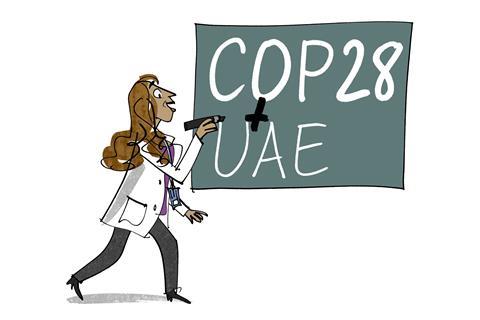Avoid so-called climate solutions that disadvantage the most marginalised

It was the graveyard slot – 6pm on the last day of week one. Our side event had only just been confirmed a few days before my arrival into Dubai, and we had to merge our plans with those of another organisation. Yet here I was, speaking on a panel at Cop28 – putting gender on the agenda.
Cop28 marked the first Cop with a day dedicated to gender so I was excited and optimistic. The climate crisis is not gender neutral and therefore policies need to reflect this. Yet on the day, there was an evident lack of men in the room and the clear absence of any official high-level meeting. Nonetheless, there was still hope and calls for action from yong people, women-led organisations and UN agencies endorsing a more active role in tackling climate change through a gender lens and a partnership between countries was signed to strengthen a gender responsive, just transition (not legally binding but it is a start!).
I was given observer status to attend Cop28 through a non-governmental organisation I am a member of. Womenvai is a collection of people that solves real world problems through a gender lens, from making transport safer to promoting education with an emphasis on including women in high level policy making. And there’s no problem we need to solve more urgently than climate change. These solutions are not isolated by disciplines, rather they require a holistic approach across different subject areas so that their impacts benefit everyone.
Looking at research proposals through a gender lens ensures that we have this narrative early on. In particular, it helps us avoid solutions that are going to disadvantage those who are already marginalised. A sustainable solution for the global north – electric vehicles – is not sustainable for the global south, as mining for lithium in the Chilean salt flats is causing water scarcity that disproportionately affects women and indigenous communities. Or take the deforestation of whole villages in Indonesia for the mining of critical materials and the mining of rare elements in Congo – materials that are needed for the energy transition. As a chemist, I didn’t think of these things until I started working in this role.
Our pursuit of clean and renewable energy has a high human price
Chemists should apply a gender lens in their work, from inceptions of research proposals through to their final output. This can be through the problem they are trying to solve, or from the supply chain that they use for their experimental work. Our pursuit of clean and renewable energy has a high human price, and thus we have a responsibility to ensure that we educate ourselves and try collaborating with those affected, and with those who have different expertise or perspectives, to resolve global issues.
Even for the Cop28 side event, we had to collaborate with Solar Impulse, an organisation that appeared to have very different objectives. Solar Impulse focuses on technical and profitable solutions, whereas our vision is to advocate for gender equality in Stem for better practice for climate change adaptation. However, once we talked things through, we attained a common goal, choosing a title of ‘Opportunity over urgency: a new narrative for climate action’. Importantly, we decided that we should have a panel discussion with young people, including undergraduate students from our workshops (coming from social science and physics), as they are the ones most impacted by climate change. Giving the floor to young people is crucial and allows for policy makers to have a better understanding of how their decisions will impact the younger generation.
I was quietly confident that we had a solid event lined up – just worried if people would turn up. But there were a few people in the room when the event started so I was happy.
The students gave their case study of the Chile water crisis and it was very well-received with audience members and even other panellists from Stem backgrounds acknowledging the need to apply a gender lens in their work. There was good engagement with the audience and the nature of the side event – including the diversity of the panellists and conversational tone – allowed everyone to express themselves openly. People also liked the takeaway message of collaboration, education, and a gender lens throughout every action.
Moving forward, we formulated a pledge based on key points raised at the side event, which is available on the Womenvai website for those who are keen to advocate for gender equality and the United Nations sustainable development goals. Cop28 in general was a learning curve, and I was fortunate to meet people who are doing great things. But we’d be able to do even greater things, where actions lead to measurable impacts if prominent politicians and other high-level officials drove gender responsive policy and practice when it comes to addressing the climate crisis.

















No comments yet